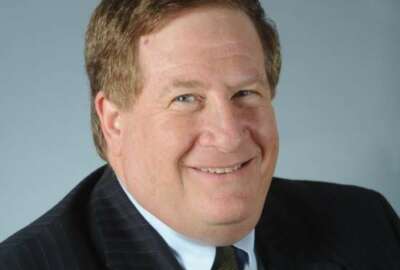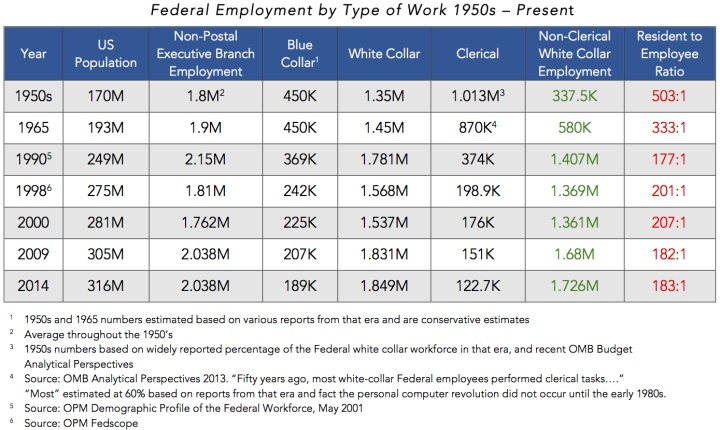

Jeff Neal says the potential for AI will change how employees work, present new risks and change how the American people interact with the government.
This column was originally published on Jeff Neal’s blog, ChiefHRO.com, and was republished here with permission from the author.
It is hard to avoid seeing articles and studies that talk about artificial intelligence (AI) and how it will provide many benefits and open the door to countless risks. A recent two-part Partnership for Public Service report — “More Than Meets AI” — talked about steps agencies should take to communicate with their employees, ensure they have the right skills, minimize risk and build confidence in systems.
All of those are good things to think about. It is true that the potential for AI is so far-reaching that it will certainly change how employees work, present risks we are only beginning to understand and change how the American people interact with the government. The problem with a lot of what I am reading is that it does not take the promise of AI and present concrete examples of how something we all are used to seeing and experiencing will change.
Employees will need new skills. OK. Got that. What new skills will they need? Are we talking about the skills of the tech folks in the agency? Yes. Are we talking about the people who will use the tech? Yes. Are we talking about the agency’s customers? Yes. So we are talking about the potential retraining of the bulk of the federal workforce over a period of years.
We have retrained people before. When we started moving from paper to mainframe-based systems, we trained employees how to use the dumb terminals that started appearing in their offices. When the first personal computers started appearing in offices, we taught people how to use them, found ways to use the capabilities of the technology and then gradually transformed the way everyone works.
The transformation in those days was slow and mostly predictable. It was a move from paper and pencil to digital, but much of the work replicated what was already being done. While the change was predictable, it was also far-reaching. As I wrote in October last year, during the 1950s, the federal government employed more than a million clerks. Those jobs were mostly automated out of existence. By 2014, the number was down to 123,000. Now the number is down to 106,000.
The fact that we could replace 900,000 jobs and not have tremendous disruption is partly because it was a gradual transformation, partly because it affected the lowest graded jobs where turnover was traditionally high, and partly because it changed the nature of how the most repetitive tasks were done. But it did not change the fundamental work being done, as much as we might think.
The federal government was part of a much larger move to an economy based on knowledge work. Knowledge workers derive their economic value from the knowledge they bring to the table. Clerical work, much like trade and craft work, brought value mostly because of the labor the employees carry out, not their technical and programmatic skills. As those jobs disappeared, they were replaced with people whose knowledge was their contribution.
That transformation is the reason I have said for a long time that the federal government is actually much larger as a percentage of the population than it was in the 1950s. In 2014, I wrote a post that showed how that happened. At the time, we had 183 U.S. residents for every nonclerical federal employee. In the 1950s, the number was one for every 503 residents.

The change in the federal workforce that was driven by the increased use of technology was enabled by increased government spending and the fact that the number of federal employees appeared to remain relatively constant. In inflation-adjusted dollars, federal spending is almost five times as much per U.S. resident as it was in the 1950s.
When we experience the next wave of AI-enabled changes, can we expect the same thing to happen? Is it likely that we will continue to see federal spending increase at the rate it has in the past 60 years? Will large numbers of federal jobs be replaced with technology, only to reappear in another form? I think the answers to those questions are going to drive federal agency priorities for years to come.
Will federal spending increase? If the recent spending agreement is any measure, absolutely. The last big attempt by Congress to put itself on a fiscal diet was sequestration. Remember that? They put automatic cuts in place so they could force themselves to stop spending. Then they spent trillions. Spending kept going up because politicians will spend money to get votes.

This post is the first of a series that will look at the impact of AI. Rather than addressing it in broad terms, future posts will take a look at one type of federal job and examine how the work is performed today and what we can expect as technology develops. I will also make some recommendations on how that transition can come about and what will happen to the employees.
I have more than 40 years of experience in human resources, so that is the occupation I will examine. The changes we can expect in HR and how the government can make those changes will translate to other types of work as well. The next post in this series will be in two weeks.
Jeff Neal is a senior vice president for ICF and founder of the blog, ChiefHRO.com. Before coming to ICF, Neal was the chief human capital officer at the Homeland Security Department and the chief human resources officer at the Defense Logistics Agency.
Copyright © 2024 Federal News Network. All rights reserved. This website is not intended for users located within the European Economic Area.
